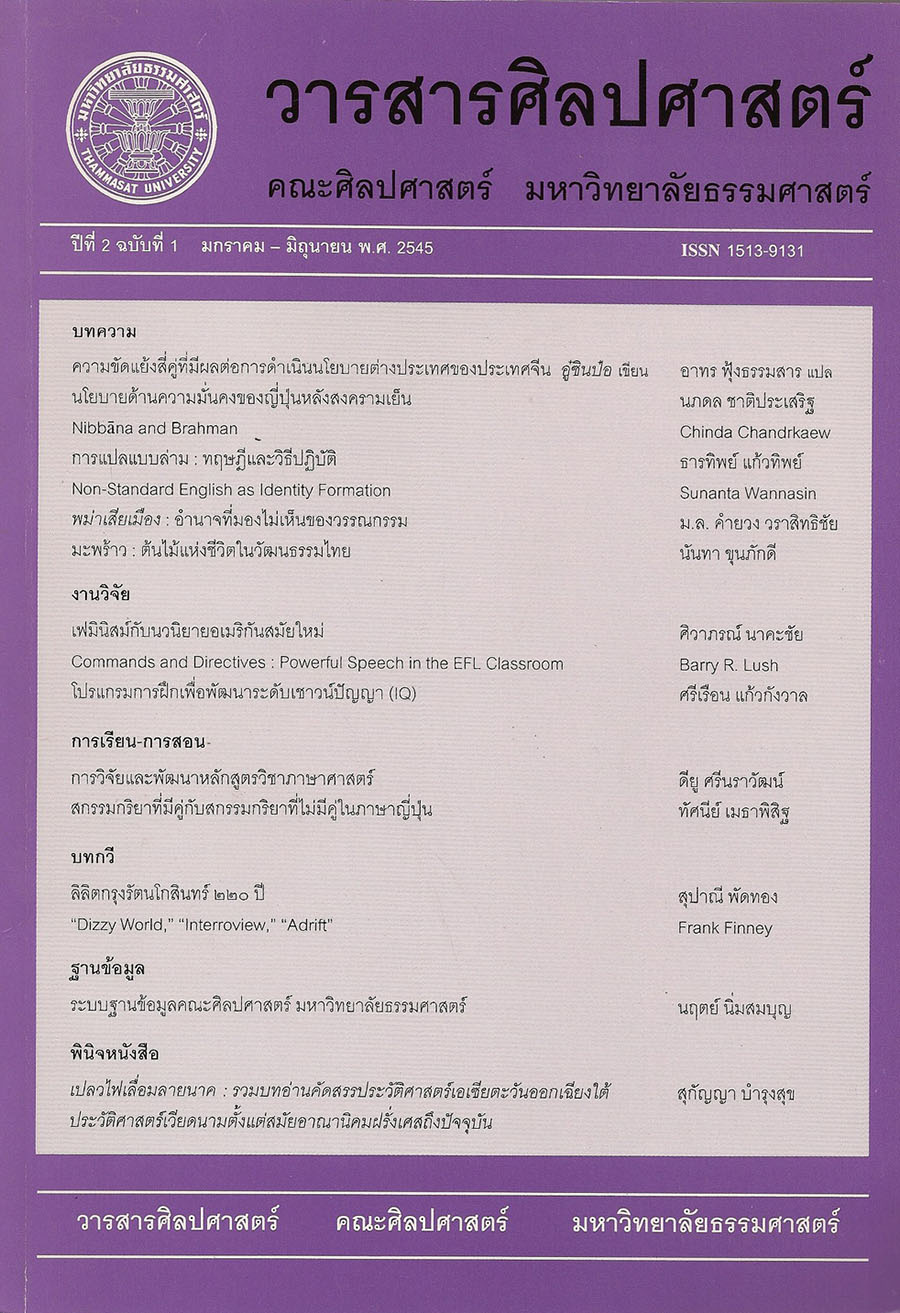NIBBĀNA AND BRAHMAN
Main Article Content
บทคัดย่อ
The paper seeks to clarify some basic similarities and differences in the concept of liberation between early Buddhism and Advaita Vedānta. First, it discusses the relationship between these two schools of thought, and then proceeds to deal with the concept of Nibbāna and that of Brahman respectively.
It is pointed out that the Vedāntification of Buddhism is not warranted doctrinally or historically, though both these systems of thought have many basic ideas in common. Early Buddhism agrees with Advaita Vedānta as to the unreality of the Samsaric world and centain descriptions about the state of liberation. But Nibbāna is essentially not the same as Brahman in that the former is never stated to be ground of the phenomenal world, as is in the case of the latter. Nibbāna is simply the ultimate goal for which we are striving.
บทความนี้ต้องการชี้ให้เห็นความคล้ายคลึงและความแตกต่างระหว่างมโนทัศน์ เรื่องความหลุดพ้นในพระพุทธศาสนาดั้งเดิมกับปรัชญาอไทฺวตะ เวทานตะ โดยแสดงความสัมพันธ์ระหว่าง 2 สำนักนี้ตลอดจนความหมายของนิพพานและพรหมันตามลำดับ
การทำให้พระพุทธศาสนาเป็นเวทานตะนั้นไม่มีหลักฐานทางคำสอนหรือประวัติศาสตร์ แม้ว่าทั้งสองสำนักจะมีมโนทัศน์หลายอย่างร่วมกันก็ตาม พระพุทธศาสนาดั้งเดิมเห็นด้วยกับอไทวตะ เวทานตะในเรื่องความไม่เป็นจริงแท้ของโลกสังสารวัฏ และลักษณะบางอย่างเกี่ยวกับภาวะของความหลุดพ้น แต่แก่นแท้ของนิพพานก็ไม่ใช่สิ่งเดียวกับพรหมัน เพราะนิพพานไม่มีลักษณะเป็นฐานของโลกปรากฎการณ์ เช่น กรณีของพรหมันนิพพานเป็นเพียงเป้าหมายสูงสุดที่ชาวพุทธแสวงหาเท่านั้น


